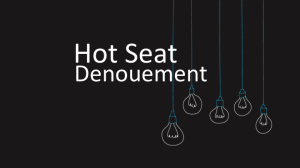Hot Seat #88 Denouement: 17yo F in cardiopulmonary arrest
Posted on: February 23, 2017, by : Evan Sherman
Rachael Batabyal MD, Children’s National Medical Center
The Case
A 17yo F presented following a cardiopulmonary arrest. This case demonstrated the difficulties encountered when attempting to resuscitate a patient with an unknown diagnosis.
Here’s How You Answered Our Questions:
Discussion:
Woah. There was unanimous agreement amongst our group that this was a high-intensity case, involving a difficult resuscitation with multiple simultaneous and occasionally competing goals. We spent some time discussing the multiple etiologies of this patient’s depressed mental status and our concern for cerebral edema. The patient’s hyperglycemia certainly put DKA at the top of our differential, but since she had just recovered from a cardiac arrest, could her altered mental status be explained by hypoperfusion and acidosis, or could she have some component of metabolic cerebral edema? Would giving mannitol or 3% NaCl have the untoward effect of promoting diuresis in this already intravascularly depleted patient? Most respondents seemed to think that the risks outweighed the benefits at this point.
Our conclusions about giving calcium or bicarb was similarly ambiguous. There was general agreement that this patient’s acidosis caused her arrest, but could hyperkalemia have played a role as well? Should we trust the bedside potassium measurement of 6 given her EKG changes? Most agreed that there was little downside to giving calcium to stabilize the cardiac membrane. Despite the lack of evidence for the efficacy of bicarb, some in our group advocated using it to correct this patient’s acidosis but not solely to help correct her hyperkalemia.
Our teaching attending for the week, Theresa Walls, gave a concise summary of her considerations in this difficult case.
Denouement:
The patient received calcium chloride, bicarb, and stress dose steroids, and was started on norpei and epi drips in addition to continuing her dopa drip. Narcan was given x 1 without improvement. CXR and AXR were unrevealing. Cardiology was consulted while patient was in the ED and agreed with current management. SW was also involved in the ED.
The patient was transferred to the PICU, where she received mannitol for presumed metabolic cerebral edema as well as possible global hypoxic injury. Initial CMP could not be run because initial Glucose was >1500. Repeat CMP was significant for a BG of 1350, with Na 146, K 5, CO2 17, BUN 88, Cr 3. Her HgbA1c was found to be 13. Initial portable head CT was notable for no acute intracranial hemorrhage, no mass affect and no midline shift.
Utox was negative. All blood and urine cultures were negative.
SW notified CPS of concern for medical neglect given late presentation.
Endocrine was consulted and thought this was likely DKA in the setting of new onset diabetes. The patient was subsequently treated per the hospital DKA protocol. An EEG initially showed burst suppression pattern (which carried a poor prognosis after cardiac arrest), and later became suppressed. She continued to have depressed mental status in the absence of any sedation, despite electrolyte management and neuroprotective measures. Over the next 3 days her neuro exam showed signs of evolving herniation. Neuroimaging demonstrated global hypoxic ischemic injury, possibly with superimposed metabolic edema with uncal and cerebellar herniation. In light of worsening neurologic exam and poor prognosis, the family chose not to proceed with formal brain death testing and to withdraw care on HD 4.
The information in these cases has been changed to protect patient identity and confidentiality. The images are only provided for educational purposes and members agree not to download them, share them, or otherwise use them for any other purpose.
